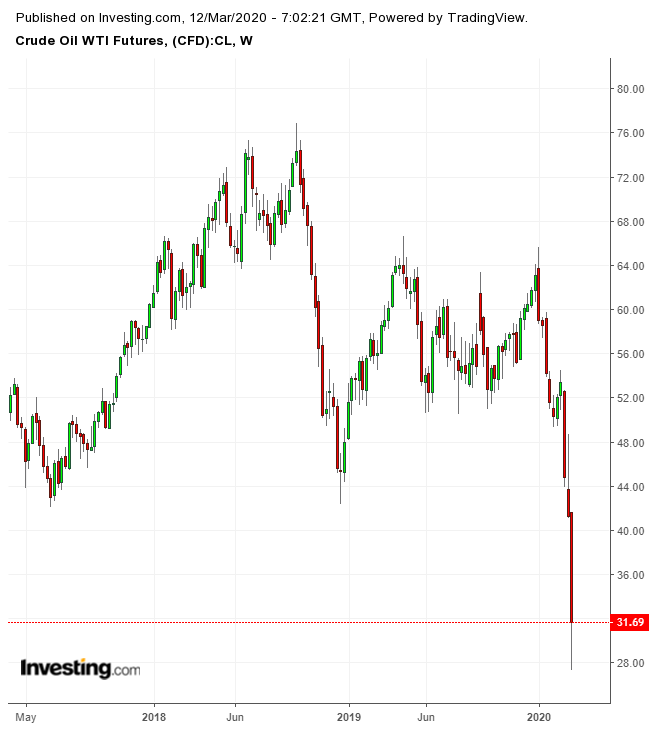The oil market has been exceptionally dramatic and eventful over the last week. A combination of fundamentals along with misinformation has led to heightened volatility and a collapse in oil prices.
But the current market narrative is deceptive. Below, are the real, crucial issues for traders. Here's what transpired and what's actually driving market instability right now:
What Really Happened:
For most of last year, the market has been obsessed with the prospect of a global economic slowdown and fear of diminishing demand growth. The emergence of coronavirus only exacerbated these concerns further and introduced the prospect of a decline in oil demand in 2020.
It was reported that China—ground zero for the pandemic and thus far hardest hit by the coronavirus—reduced the cargoes of oil it would buy from West African oil suppliers and from Saudi Arabia. The prospect of lower demand, especially from China, stoked market worries and oil prices started to drop.

At its meeting last week, OPEC reacted by floating a production cut, designed to decrease supply enough to counteract lower demand and stabilize the market. Russian support for a production cut was necessary since OPEC was working with non-OPEC members within the OPEC+ framework.
Because Russia, China’s second-largest oil supplier, hadn't seen a reduction in its sales to China, the European nation didn't believe there was a reason to cut its own production to satisfy OPEC’s desires. When presented with a plan on Friday, Russia, acted in its own self-interest by vetoing the cut, seemingly splitting OPEC+ in the process.
Over the weekend, news emerged that Saudi Arabia was both offering oil at significantly discounted prices to customers—primarily in Asia—and increasing its available supply to 12.3 million barrels per day. These actions enerved the market, making it appear as though Saudi Arabia was starting a price war with Russia.
In reality, a price war means attacks come from both directions: the next salvo would have to come from Russia, then Saudi Arabia, then Russia, etc. That hasn't happened yet. The market was so anxious about a potential price war, that when international exchanges opened at the start of the week, oil prices dropped over 30%.
Russia responded to the Saudi move by saying it would increase its production (not necessarily decrease prices) and that it, if necessary, was ready to use its $150 sovereign wealth fund to support the economy and cover budget losses. On Tuesday, Saudi Arabia announced it was prepared to supply up to 12 million bpd.
This was a big deal. That number meant Saudi Arabia would be using up its spare capacity.
However, on Wednesday the Kingdom clarified that it would increase its government-mandated capacity to 13 million bpd, immediately setting off alarm bells since there was a misunderstanding about what Saudi Arabia meant by increasing its capacity. The market seemed to believe that this indicated additional production.
While that wasn't the case, for traders, what the market thinks is key. And right now, the market is scared of a price war.
Narrative Fueling Market Instability
So far, events do not confirm that Saudi Arabia and Russia are in a price war, but we will eventually see if Russia is going to lower its prices below Saudi Arabia’s.
What we have now are two out of the three biggest producers in the world flooding the market with cheap oil. They are very likely looking to raise global demand numbers in hopes prices will stabilize.
Meanwhile, the market seems convinced that we have a price war, and that is why it’s so skittish. The instability and the threat of big drops will continue as long as this narrative persists. An actual price war could last months or years, but if Saudi Arabia and Russia instead succeed at shocking oil demand back to life, we could see stabilization at least when demand numbers come out in early May.
